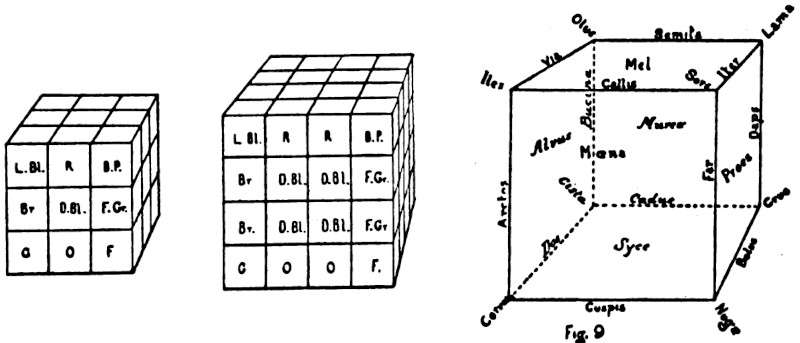
In 1880 Charles Hinton (inventor of the baseball gun) turned his attention to the fourth dimension, that unseen world whose behavior seems so baffling to ordinary thinkers.
In his 1888 book A New Era of Thought, he announced a unique way to think about it, a set of 81 colored cubes that correspond to the 81 parts of a 3 × 3 × 3 × 3 hypercube. By creating a set of wooden cubes, painting them according to Hinton’s instructions, and working through the prescribed exercises, the reader could learn to visualize the fourth dimension as intuitively as the third:
The square, in moving in the unknown direction, traces out a succession of squares, the assemblage of which makes the cube in layers. So also the cube, moving in the unknown direction, will at any point of its motion, still be a cube; and the assemblage of cubes thus placed constitutes the tessaract in layers. We suppose the cube to change its colour directly it begins to move. Its colour between 1 and 2 we can easily determine by finding what colours its different parts assume, as they move in the unknown direction.
Hinton’s method drew few adherents, but he was sure that it worked — he had proved it for himself. “The particular problem,” he wrote, “at which I have worked for more than ten years, has been completely solved. It is possible for the mind to acquire a conception of higher space as adequate as that of our three-dimensional space, and to use it in the same manner.”
He moved on to other things, but he’s left us one permanent calling card — Hinton coined the word tesseract.
